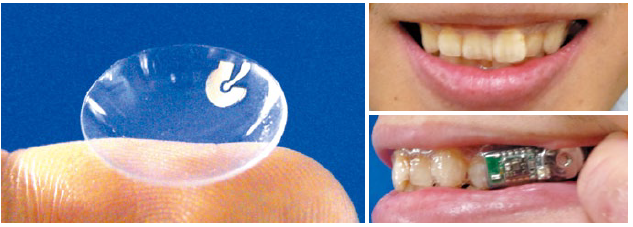Body cavity sensors offer monitoring solutions in daily medicine
PDF Download
- Body cavity sensors

Kohji Mitsubayashi
Professor of Biomedical Devices and Instrumentation at TMDU
Profile
Dr. Mitsubayashi received his PhD from the Department of Advanced Interdisciplinary Studies at the University of Tokyo in 1994. He became Associate Professor at Tokai University and in 1999, he joined the University of Perpignan in France as a visiting associate professor. Since 2003, he has been Professor at the Institute of Biomaterials and Bioengineering (IBB) at TMDU.
A:We have made rapid strides in recent decades in biosensor fabrication, applications, and readouts. I wanted to write a systematic review of significant breakthroughs and challenges that remain, and to highlight promising avenues for further research and development. Biosensors are valuable tools that measure levels of biological factors in ocular or oral body cavities. They are wearable, non-invasive, longterm sensors that provide rapid, continuous quantification of physiologically relevant chemicals in perpetually present body fluids or gaseous exchanges. Human secretions, including urine, feces, perspiration, breath, nasal discharges, body odor, or even tears, can provide valuable snapshots of an individual’s health, anxiety level, genetics, and immune status.
A:Body cavity sensors have changed medical monitoring. Transcutaneous oxygen sensors are user-friendly for preventing premature retinopathy in infants. Ocular telemetry sensors monitor glaucoma by correlating easily measurable corneal curvature as a readout for nocturnal variations and instabilities in ocular pressure. Tear glucose levels correlated to output current, which significantly corresponded with blood level, albeit with time delays and concentration differences. Interestingly, amperometric sensor-based contact lenses or modified commercial lenses were found to measure tear glucose and hypoxia reproducibly, itigating interference confounders.
Salivary levels of risk factor uric acid in stress, gout or diabetes correlate with blood levels and are estimated non-invasively with electrode-based mouthguard platforms. Alternate applications include lactate measurement for fitness and sensors for measuring bacteria on teeth.
A: Microfluidics, MEMs and biomaterial-based technologies have revolutionized biosensor fabrication. Microsystems enable measurement of biological readouts in small volumes, reducing costs and increasing accessibility. Purpose- and microenvironment-specific biomaterial design with adaptable, biocompatible features have led to advances in polymer technologies with utilization of PEG, PTFE, or PDMS-DMA, the use of phospholipids MPC or PMEH, chemical coatings including gold or titania sol-gels, NafionTM to reduce chemical interference, and even “smart” 3D reversible hydrogels.

Cavitas biosensors for non-invasive biomonitoring in daily medicine
Soft contact lens-type biosensor with biocompatible polymers for tear glucose monitoring (left); Mouthguard telemetric sensor (right: front & side views) with Bluetooth 4.0 LE (low energy) transmitter
A: My interests in developing biological materials and microsystem technologies are closely associated with biosensors. Body cavity sensors are convenient for the vulnerable aging population of Japan. For example, by quantifying flow, there are flexible, conductometric sensors that measure tear electrolyte concentrations and turnover rates, which can indicate tear gland malfunction in older patients with Keratoconjunctivitis sicca.
A: While highly sensitive “biotransferrables” are gaining traction in the clinic, the next steps include making them less cytotoxic and more affordable for a broader range of applications.
Journal Information
Electroanalysis, doi: 10.1002/elan.201600083

